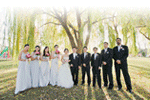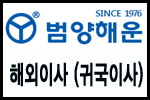샌디에고 풍물학교에 계시는 문화재급 선생님들^^


안녕하십니까?
알고계시나요?
지금현재, 풍물학교에 계시는 귀한 선생님들! 그리고...,
곧 풍물학교 학생들과 함께 공연하실 문화재급 선생님들!
소개해 드리겠습니다^^
*Dr.Cha, Young Soo
-6/20(목) 공연 참석차 한국에서 오시는 대한민국 중요 무형문화재 제1호 '종묘제악' 이수자 & '해금연주가'
- 6/20공연이후, 2주일정으로 '해금'강습 예정입니다. (배우기를 원하는 남녀노소 누구든지 가능합니다.)
*Hyun Sook Lee - 대한민국 국가중요 무형 문화재 제 49호 "송파 산대놀이" 이수자선생님.
*강대승선생님 - 엘에이 영두레패 단장님 & 대한민국 국가중요 무형 문화재 제34호'강령탈춤 이수자선생님.
*Brian Kim- Senior, UCSD. 샌디에고 풍물학교 PERFORMANCE 내용을 졸업작품으로 RECORD했습니다.
*백경민- 경북대학교 경제학과 4학년 재학중에 UCSD 교환학생으로 공부하고 있습니다.
매주 토요일 공연과 일요일 전체연습에 참여하여 경북대학교에서 전승되는 '풍물가락'을 전수해주고 있습니다.
*Ye Seul Lee - 이화여자대학교 약대를 졸업하고, 마케팅회사에 취업차 샌디에고에 오셨으며,
이대 재학생시절, 갈고닦은 '고창풍물굿' & '호남 소고춤'을 풍물학교 학생들에게 전수해주고 있습니다.
**** 학부모님들께 부탁드립니다*****
아래, 풍물/사물놀이에 관한 내용을 카피하셔서
자녀들이 "풍물/사물놀이 공연'에 관한 지식을 쌓을 수 있도록 특별지도 부탁드립니다.
6/20(목) 공연에서 캡틴의 중책을 맡은 "민호/주연"이랑 다음캡틴의 자리에 도전해보고 싶은 학생들은
반드시 숙지해서, 언제 어데서든 누구든 물으면, 술술술~~~
나올 수 있도록^^
시간을 할애해서 지도해주시길 부탁드립니다.
이번 일요일 전체연습때, 'Lee, Ye Seul선생. 이화여대's 소고춤' 강습이후....,
모든 풍물학교 학생들이 돌아가면서 발표하는 시간을 갖을 예정이오니,
꼭! 시간을 내서 준비 부탁드립니다.
감사합니다.
샌디에고 한국 풍물학교 상쇠드림.
cell phone; 858)880-8091

 Kwaengwari |
 Jing |
 Buk |
 Janggu |
Samulnori 사물놀이
is a type of Korean percussion music that has been gaining popularity over the last few decades, both in Korea and abroad.
The term “samulnori” ( 사물놀이) can be broken into two parts - “samul” meaning “four things”, and “nori” meaning “to play”.
The Samulnori ensemble generally consists of four main instruments : Buk, Janngu, Jing and K'Kwaenggwari.
In a minimal ensemble there will be just one of each, but you will also sometimes see larger groups with four or more of each instrument.
However, even in these larger groups, the role of each instrument is the same.
Each one represents an element of nature, the Jing being the wind, the Janggu the rain, the Puk the clouds, and the K’kwaenggwari the lightning.
Samulnori has it’s roots in farmer’s music (Nong-ak / Pung-mul), and includes not only music but dancing to celebrate harvest times.
Samulnori is played sitting down and generally consists of only the four main instruments, the janggu, buk, jing and kwaengarri. To capture the audience’s attention, Samulnori rhythms are more complex, dynamic and in depth. At times it can become extremely soft and slow but it can grow to be thunderous and quick. Samulnori can consist of solos when the percussion fades out and all you can hear are the pounding of drums. It can also consist of duets that seem to be a lengthy and lively conversation between kwaengarris. Its strong, accented rhythms, vibrant body movements and energetic spirit has made Samulnori still widely used to express Korean culture.
THE FOUR INSTRUMENTS
(1)Samulnori : Puk
Also known as 'Buk', this is a low a low pitched barrel drum, played with a single wooden mallet.
It is about 30 cm in diameter, and made from a piece of hollowed out wood with a leather skin tied across each side.
It provides the bass pulse of the group.
(2)Samulnori : Jing
A gong made of iron. Sometimes hung on a frame, or else held by it’s handle, it’s generally played with a large padded beater.
It can also be played with the hands.
(3)Samulnori : Janggu
An hourglass shaped drum, each side covered with a different kind of leather.
One side produces a higher pitched sound and is struck with a thin bamboo reed, the other side is played with a mallet and produces a deeper sound.
(4)Samulnori : Kkwaenggwari
A very small hand-held gong held in the left hand and played with a small hard beater.
It’s about 25 cm across made primarily of brass. The left hand is also used to damp the gong.
This instrument leads the group, signaling transitions in the music.
Pungmul ([ˈpʰuːŋmul] POONG-muul) 풍물놀이
is a Korean folk music tradition that includes drumming, dancing, and singing.
Most performances are outside, with tens of players, all in constant motion.
Pungmul is rooted in the dure (collective labor) farming culture.
It was originally played as part of farm work, on rural holidays, at other village community-building events.
Drumming is the central element of pungmul. Each group is led by a kkwaenggwari (small handheld gong) player,
and includes at least one person playing janggu (hourglass drum), buk (barrel drum), and jing (gong).
Wind instruments (T'aepyongso, and Nabal) sometimes play along with the drummers.
Pungmul performers wear a variety of colorful costumes. A flowery version of the 'kkokkal'(꼬깔) is the most common head-dress.
Advanced performers sometimes wear sangmo, which are hats with long ribbon attached to them
that players can spin and flip in intricate patterns by moving their heads.
In Pungmul, performances are done outside, with tens of people, all in constant motion. It is based mostly on dancing, movement and interacting with the audience. Colorful costumes allow the performers to stand out and draw attention. The kwaengarri leads the performers into formations of various shapes like flowers, snakes, etc. Following the drummers are dancers, who often play the sogo, a smaller drum simply for show as they twirl hats with long silvery ribbons attached. Not in any sort of organized line are the japseak (actors) who wear traditional clothing and wander around to engage spectators and draw in the audience. Wind instruments such as the taepyoungso (an instrument similar to the trumpet) are also commonly played during pungmul. All in all, Pungmul is known for crossing the boundary between performer and audience through its lively and upbeat performance, often inviting members from the audience to come and dance with them.
Korean traditional music consists of various captivating rhythms, melodies and instruments. The two forms of music that we will perform had been played and perfected throughout history ever since its early roots in farming culture. Called Pungmul and Samulnori, they both consist of four main instruments: the janggu, buk, jing and kwaengarri. Each has an important role when played together. The janggu plays various different rhythms and patterns to keep it interesting, the buk provides the deep bass pulse of the group, the jing maintains a steady beat by playing at the beginning of each rhythm, and the kwaengarri is known as the “conductor” by leading the group and signaling transitions in the music.









































































